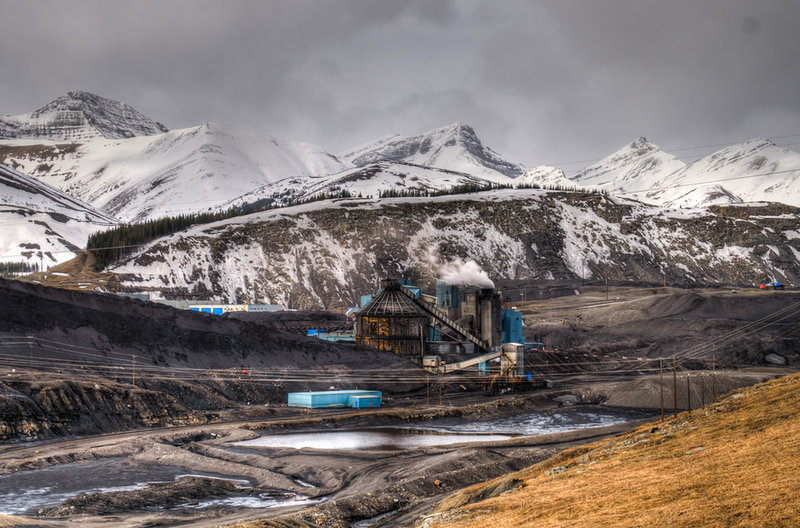
INTERNATIONAL RELATIONS
Hands across the Pacific: Australian miners look to North America
Market forces and a growing US-Australia critical minerals partnership are bringing North America into sharp focus as an investment destination for Australian miners. Chris Lo finds out more.
As Australia’s mining industry has expanded and developed over the last two decades or more, its footprint has spread all over the world. Australian mining rivals even its Canadian counterpart when it comes to the sheer number of mining companies operating globally, and Australia ranks second in global mineral exploration spending.
A spate of high-value Australian mining investments in Canada and the US in recent years reflects a growing trend of Australian Securities Exchange (ASX)-listed miners finding a comfortable second home in North America.
Australian miners have been listing on the Toronto Stock Exchange since the 1990s and Anglo-Australian industry giant Rio Tinto spends more on mineral exploration in the US than anyone else, so it’s no great surprise that Australian resource companies still see North America as a friendly investment destination.
But there are some trends in the market, as well as in the developing strategic relationship between Australia and the US, that have been driving recent investment across the Pacific, in both directions.
Australian miners investing in North America
Australian mining groups have invested more than A$3bn in North America in the last two years, with the spending dominated by several large mine acquisitions. In August 2018, Western Australia-based Northern Star Resources – which in October announced a huge merger with Saracen Mineral Holdings, creating Australia’s second-largest gold miner – spent $260m to acquire the Pogo underground mine in Alaska, which has been producing an average of 300,000oz of gold annually for the last 12 years.
In 2019 there were significantly larger North American acquisitions, including Hancock Prospecting’s $500m buyout of Riversdale Resources, developer of the Grassy Mountain coking coal project in Alberta, which is proposed to start producing in 2021.
Australia’s largest gold miner, Newcrest Mining, acquired a controlling interest in Imperial Metals’ Red Chris gold-copper mine in British Columbia for $806m.
Australia’s largest gold miner, Newcrest Mining, acquired a controlling interest in Imperial Metals’ Red Chris gold-copper mine in British Columbia for $806m, in a move the company has described as “a meaningful yet measured entry into North America”.
Meanwhile, Victoria-based gold miner St Barbara spent $550m acquiring Atlantic Gold and its Moose River Consolidated open-pit gold mine in Nova Scotia, which is preparing for a second-phase expansion that would more than double its annual output to 200,000oz. In a statement in May 2019, St Barbara managing director and CEO Bob Vassie sounded enthusiastic about the company’s growth in North America.
“We are gaining an impressive team with an excellent track record of successfully bringing deposits into operation, which gives us a great capability and platform for further opportunities in the region,” Vassie said.
Market forces bring North America into focus
So, what explains the sudden streak of sizeable North American acquisitions by Australian miners? Of course, there are the fundamentals that have remained unchanged for years, from the maturity of the US and Canada as mining jurisdictions to their political stability and even similar geology, in the case of Canadian gold. Soaring gold prices, which reached all-time highs in 2020 as the Covid-19 pandemic pushed investors towards safe havens, have also clearly driven the snapping-up of gold mines in Canada and Alaska.
Prevailing market conditions in Australia and Canada have also helped put their respective mining sectors on an investment collision course. Australian miners are enjoying strong valuations on the ASX and are keen to explore international opportunities amid high costs at home, while Toronto-listed Canadian mining companies have seen declining valuations and difficulties raising capital.
This is partly explained, oddly enough, by the rise of the legal cannabis trade in Canada, which has seen an explosion of equity-raising by the cannabis industry on the TSX Venture Exchange, traditionally a key financing destination for Canadian junior miners.
Australian companies are trading to huge premiums, so they leverage their currency value over Canadian sites.
“Australian companies are trading to huge premiums, so they leverage their currency value over Canadian sites,” said Mark O’Dea, chairman and founder of Vancouver-based merchant bank and mining house Oxygen Capital, in an August 2019 interview with Australian Mining. “All of [the] venture capital and high-risk money that used to find its way into the mining space has migrated out, mainly to cannabis.”
Furthermore, Australia is beginning to leverage its position as an alternative (read: non-China) source of critical and strategic minerals for the lucrative US market, to drive investment into Australia and to drum up opportunities for Australian companies to act as trusted partners on mining projects in North America itself. This is the tack being taken by Queensland’s Sayona Mining with its Authier and Tansim lithium mines in Quebec.
“It really fits into the strategies and opportunities in developing Quebec as a source of downstream processed lithium for the US market,” Sayona managing director Brett Lynch told The Australian Mining Review in 2019.

// 3D System Model and Completed Installation. Credit: Deimos
Australia-US critical minerals partnership could pave the way for more deals
This strategic minerals link is being explicitly nurtured by the US and Australian governments. In November last year, the two countries formalised a strategic partnership on critical minerals including rare earth elements.
The agreement will see Geoscience Australia and the US Geological Survey collaborate on mapping critical mineral potential, and help Australia understand match the development of its critical resources to international demand. As Australia’s Minister for Resources and Northern Australia Matt Canavan noted last year, the partnership represents a new frontier of business opportunity for Australian mining firms.
“Growing global demand for critical minerals means there is huge scope for Australia to develop secure and stable supply chains to meet the growing demand for critical minerals in key economies such as the US,” he said. “The US has a need for critical minerals and Australia’s abundant supplies make us a reliable and secure international supplier of a wide range of those, including rare earth elements.”
The US is a particular focus as a market for critical minerals due to ongoing trade tensions with China and the government’s concern about China’s dominance over large swathes of the supply chain for rare earth elements, as well as other mining commodities that are essential for advanced defence and clean energy technologies. Building a more reliable and diverse critical minerals supply has been a key priority of the outgoing Trump administration, and Australian companies are well-positioned to take advantage of this push.
// Main image: 3D System Model and Completed Installation. Credit: Deimos
Facilitating investments in Australian mining
Perth-headquartered Lynas Corporation, the only large-scale rare earths producer outside China, has already benefited. In July 2020, the Pentagon confirmed funding for two rare earths processing projects in the US, with Lynas’s in-development separation facility in Texas snagging one of the awards.
An emergency order issued by President Donald Trump in late September is likely to further facilitate investments in Australian mining, both in the US and at home. The order authorised direct US state investments in international critical minerals projects, while also prioritising the expansion of domestic production capacity. The move could prove to be a boon for Australian miners working on rare earths and other critical resource projects at home, as well as in the US and Canada.
// Main image: 3D System Model and Completed Installation. Credit: Deimos
Security of supply is critical because of rising global trade tensions.
“To the extent that [the emergency order] makes permitting of exploration projects easier, it will allow Australian firms with expertise to explore for the lithium or the copper that will be needed in the renewable energy conversion,” an unnamed Rio Tinto executive told Australian Financial Review in October.
Examples of Australian-operated rare earths operations in North America include Sydney-based Vital Metals, which is aiming to bring its Nechalacho rare earths project into production in 2021, with production ramping up to at least 5,000 tonnes of rare earth oxides by 2025. Another Sydney mining firm, Broken Hill Prospecting, acquired Arizona’s La Paz rare earths project in August 2019, which the company’s CEO Trangie Johnston described as “a unique opportunity for shareholders for exposure to the US rare earths market, where security of supply is critical because of rising global trade tensions”.